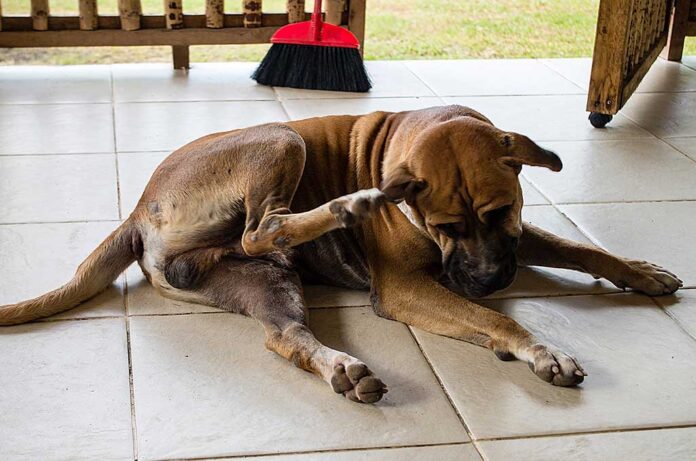Have any of you experienced fleas or ticks after taking your dog out in past years? Well, you’re not alone. In fact, many pet owners experience this after walking through the neighborhood or visiting our parks. The parks are not immune to these little critters, and neither are our own yards. Add the warm winter we are having, and we’re sure to have a normal, if not higher than normal, flea issue this year.
Fleas pose an issue all year long but worsen in Spring and Summer. Ticks are seasonal, showing up in Spring and Fall.
If you have ever had fleas in your home or on your pet, you may understand the gamut of issues that may result. Itchy, bumpy skin, hot spots from your pet chewing and tapeworms are not fun and can make your pet miserable.
How do you know if your pet has fleas? One way is to use a flea comb. The fine-toothed comb, when brushed through the body, will pick up any fleas as well as what is generally called “flea dirt.” Flea dirt is dried blood, and when added to a drop of water, it turns red. If one or both are present, you have fleas.
Without treatment, flea infestations happen quickly. In fact, every female flea lays on average 30 eggs per day. For every adult flea seen, 95 percent of the fleas are invisible to us, waiting to hatch. It’s known that to treat them successfully, we cannot ignore treating the environment. Traditionally, many of us have used “flea bombs” to fumigate our homes. Although somewhat effective, those are chemicals, so there are downsides.
What to do if you have fleas?
Natural flea control in the home & yard
- Daily thorough cleaning, washing and vacuuming
- Bathe your pets. Completely lather the neck first to “trap” the fleas on the body. Use a flea comb to pluck off any fleas on the face and ears.
- Boric acid is a safe drying product that will dry out and kill flea eggs. Boric acid can be picked up from the laundry section at any grocery store (one brand name is Borax). Lightly sprinkle boric acid on rugs and carpets and under furniture cushions, and under furniture. Let sit for 2-5 days, then vacuum.
- Pick up beneficial nematodes from local stores such as Al’s Garden Center or Backyard Bird Shop. These microscopic organisms feed off insect larvae. This only takes a few hours, and your yard will be flea (and aphid) free in no time.
Natural preventatives that won’t hurt your pet or the environment
- Flea comb daily. Dunk fleas in a bowl of soapy water.
- Apply a natural, effective flea repellent to your pets. Flea Flicker! Tick Kicker! by Ark Naturals and Insect Repellent Herbal Wipe-On Oil by Mad About Organics are safe to use on both dogs and cats.

























